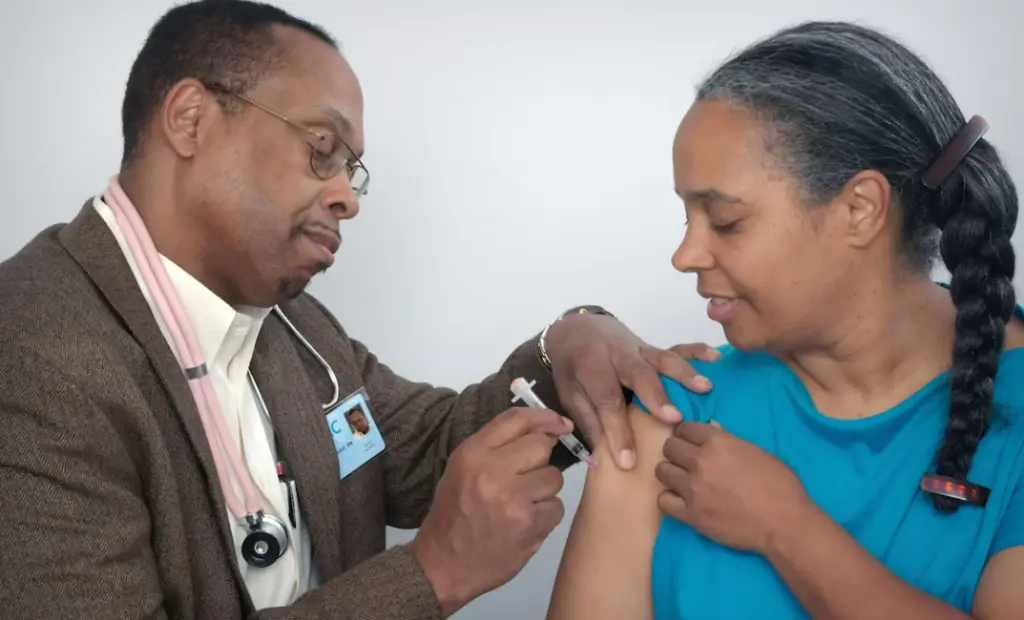Choosing between Medicaid vs private insurance can feel overwhelming when you need coverage. You might wonder which option fits your budget and health needs. This guide breaks down the difference between Medicaid and private health insurance clearly.
You’ll discover how Medicaid vs private insurance coverage comparison works in real scenarios. We’ll explore Medicaid vs private insurance costs differences, including premiums and deductibles.
You’ll learn about Medicaid vs private insurance eligibility and benefits for your situation. We answer is Medicaid or private insurance better for families and individuals. You’ll find state-by-state enrollment windows and details on dual eligibility.
By the end, you’ll know exactly which coverage protects you best. Let’s start understanding your health insurance options today so you can make confident decisions.
Table of Contents
Understanding Your Health Coverage Options

Navigating healthcare coverage can feel confusing when you need protection fast. The difference between Medicaid and private health insurance can significantly affect your wallet. Your choice impacts which doctors you see and what treatments you receive. This section helps you understand Medicaid vs private insurance from every angle.
Healthcare coverage in the United States comes in two primary forms. Government-funded Medicaid serves low-income individuals and families with minimal costs. Private insurance requires you to pay monthly premiums through employers or marketplaces.
What Is Medicaid?
Medicaid is a joint federal-state program providing free or low-cost coverage. Your state government runs the program with federal funding and guidelines. According to Medicaid.gov, over 77.9 million Americans currently receive Medicaid coverage.
Income determines your Medicaid eligibility primarily through Modified Adjusted Gross Income (MAGI). In expansion states, you qualify with income at 138% of the Federal Poverty Level. For 2025-2026, that means earning $21,597 or less annually for one person.
Your family size matters when calculating Medicaid eligibility across all states. Children, pregnant women, seniors, and individuals with disabilities receive special eligibility considerations. Each state sets additional eligibility rules beyond federal minimum requirements.
What Is Private Health Insurance?
Private insurance is provided by commercial companies that sell coverage through various channels. You purchase plans through employers, directly from insurers, or marketplace exchanges. These plans require monthly premiums regardless of whether you use services.
Your employer might offer group health insurance with shared premium costs. Individual plans purchased through Healthcare.gov provide another private insurance option. These plans comply with the Affordable Care Act (ACA) regulations regarding consumer protections.
Private insurance offers tiered coverage levels: Bronze, Silver, Gold, and Platinum. Higher-tier plans cost more monthly but cover more services upfront. Your choice depends on expected healthcare needs and budget considerations.
Key Differences: Medicaid vs Private Insurance Coverage Comparison

Understanding Medicaid vs private insurance coverage comparison helps you choose wisely. Both options protect your health, but they work very differently. Your financial situation and health needs guide which option best serves you.
Coverage Scope and Benefits
Medicaid covers comprehensive services, including preventive care, hospital stays, and prescriptions. Your copays typically remain minimal or nonexistent under Medicaid coverage. Emergency services, mental health treatment, and substance abuse programs receive full coverage.
Private insurance plans vary significantly in the services they cover. Your policy determines which services are covered, the copayment amounts, and the excluded treatments. Most private plans require cost-sharing through deductibles, copays, and coinsurance amounts.
Medicaid provides Early and Periodic Screening, Diagnostic, and Treatment (EPSDT) for children. Dental and vision coverage come standard in most Medicaid programs. Private insurance often excludes dental and vision unless you purchase separate policies.
Provider Networks and Access
Medicaid participants must choose doctors who accept Medicaid patients in their state. Some physicians limit Medicaid patients due to lower reimbursement rates nationwide. Finding providers can prove challenging in some geographic regions.
Private insurance networks range from restrictive Health Maintenance Organizations (HMOs) to flexible options. Preferred Provider Organizations (PPOs) let you see out-of-network doctors for higher costs. Your network size significantly affects healthcare accessibility and out-of-pocket expenses.
Specialist referrals work differently between Medicaid vs. private insurance. Medicaid often requires approval from a primary care provider before seeing specialists. Private insurance may allow direct specialist access depending on your plan type.
Prescription Drug Coverage
Medicaid covers prescription medications through state formularies with minimal copays. Your medications cost $4 or less per prescription under most state programs. Generic drugs receive priority coverage over brand-name alternatives when available.
Private insurance prescription coverage varies by plan tier and formulary tiers. You pay deductibles before coverage starts in most private insurance plans. Copays range from $10 to $50 or more for specialty medications.
Medicaid vs Private Insurance Costs Differences

Money matters when choosing healthcare coverage for your family’s needs. Understanding Medicaid vs private insurance costs prevents financial surprises. Your total healthcare spending includes multiple cost components beyond monthly premiums.
Premium Costs
Medicaid charges zero premiums for most eligible individuals and families. Some states charge small premiums for higher-income Medicaid enrollees. Your children always receive free Medicaid coverage regardless of income level.
Private insurance premiums averaged $621 per person per month for 2025-2026 coverage. According to recent data, premiums increased 6-7% compared to 2024. Your age, location, and plan type significantly affect premium amounts.
Employer-sponsored private insurance costs less because employers pay part of the premium. You still typically contribute $100 to $500 per month toward employer coverage. Family coverage through employers averages $1,500 to $2,000 monthly in total costs.
Deductibles and Out-of-Pocket Costs
Medicaid has minimal or no deductibles in all states. Your out-of-pocket maximum stays low, protecting you from catastrophic medical bills. Emergency room visits cost $3 or less under Medicaid programs.
Private insurance deductibles range from $1,000 to $9,450 for individual coverage. You must pay this amount before insurance covers most services. Catastrophic plans have deductibles of around $9,450 in 2025-2026.
Out-of-pocket maximums protect you from unlimited medical expenses in private insurance. These limits range from $5,000 to $9,450 per individual, per year. Your family’s out-of-pocket maximum doubles these amounts for comprehensive protection.
Cost-Sharing Requirements
| Cost Component | Medicaid | Private Insurance |
| Monthly Premium | $0 – $50 | $200 – $1,000+ |
| Annual Deductible | $0 – $5 | $1,000 – $9,450 |
| Primary Care Visit | $0 – $4 | $20 – $75 |
| Specialist Visit | $0 – $4 | $40 – $100 |
| Emergency Room | $0 – $8 | $250 – $500 |
| Generic Prescription | $0 – $4 | $10 – $30 |
| Hospital Stay (per day) | $0 – $25 | $500 – $2,000 |
| Out-of-Pocket Maximum | $0 – $500 | $5,000 – $9,450 |
Medicaid copays remain affordable, never exceeding $4 for most services. Your prescription costs stay minimal regardless of medication type. No surprise medical bills occur under Medicaid coverage.
Private insurance requires copays ranging from $20 to $100 per visit. Your specialist visits cost more than primary care appointments consistently. After meeting the deductible, you pay 20-40% of the costs.
Medicaid vs Private Insurance Eligibility and Benefits

Knowing Medicaid vs private insurance eligibility and benefits helps you determine coverage. Your circumstances determine which program accepts your application. Both programs serve different populations with distinct qualifying requirements.
Medicaid Eligibility Requirements
Income determines your Medicaid eligibility in expansion and non-expansion states. Your state’s expansion status significantly affects income limits. Currently, 41 states, plus Washington, D.C., have adopted Medicaid expansion.
In expansion states, adults earning up to 138% FPL qualify. For 2025-2026, that equals $21,597 for individuals or $43,150 for families of four. Non-expansion states have much lower income limits for adult coverage.
Your citizenship or lawful permanent resident status affects Medicaid eligibility. Most citizens qualify immediately if they meet the income requirements. Generally, lawful permanent residents need 5 years of residency before qualifying.
Private Insurance Eligibility
Anyone can purchase private insurance regardless of income or health status. Pre-existing conditions cannot disqualify you from coverage under ACA regulations. Your enrollment timing depends on open enrollment periods or qualifying life events.
Open enrollment for 2025-2026 runs November 1, 2025, through January 15, 2026. You must enroll during this window unless you are experiencing qualifying life events. Marriage, childbirth, job loss, or moving trigger special enrollment periods.
Your income affects your eligibility for the premium tax credit for marketplace insurance. Earning 100-400% of FPL qualifies you for subsidies that reduce premiums. These credits make private insurance affordable for middle-income families.
Special Populations and Dual Eligibility
Pregnant women receive Medicaid coverage with higher income limits in all states. Your pregnancy qualifies you at 185-200% FPL in most states. This coverage continues for 60 days postpartum, with some states extending it further.
Children qualify for Medicaid or the Children’s Health Insurance Program (CHIP) more easily. Your children may be eligible even if you don’t meet income requirements. CHIP covers children in families earning too much for Medicaid.
Dual eligibility occurs when you qualify for both Medicare and Medicaid. Seniors aged 65 and older with low income receive both coverage types. Medicaid pays Medicare premiums, deductibles, and coinsurance for dual-eligible beneficiaries.
Real-World Scenarios: Is Medicaid or Private Insurance Better?

Choosing between options depends on your specific life circumstances and needs. Is Medicaid or private insurance better for your family’s situation? These scenarios show how different people benefit from each option.
Scenario 1: Single Adult with Low Income
Maria earns $18,000 annually working part-time at a retail store. She lives in California, a Medicaid expansion state with generous limits. Her income qualifies her for Medicaid coverage with zero premiums.
Medicaid Benefits for Maria:
- Zero monthly premium saves her $600 monthly or $7,200 annually
- No deductibles means immediate coverage for all services rendered
- Doctor visits cost $1, making preventive care financially accessible
- Prescription medications cost $1 per refill for chronic conditions
Private Insurance Would Cost Maria:
- $400-500 monthly premium consuming 25-30% of gross income
- $3,000 deductible requiring significant savings before coverage activates
- $30 copays for doctor visits are deterring preventive care
- Total annual costs exceeding $7,000 before receiving meaningful benefits
Maria benefits significantly more from Medicaid than she would from other sources, given her financial constraints.
Scenario 2: Family of Four with Moderate Income
The Johnson family earns $65,000 annually with two working parents. They live in Texas, a non-expansion state with limited Medicaid eligibility. Their income exceeds Medicaid limits but qualifies for marketplace subsidies.
Private Insurance with Subsidies:
- Silver plan costs $800 monthly before $500 monthly tax credit
- Net premium of $300 monthly remains affordable for the family
- $5,000 family deductible provides catastrophic protection
- Broad provider network includes a preferred pediatrician and specialists
Why Private Insurance Works Better:
- Income exceeds Texas Medicaid limits for adults without disabilities
- Children might qualify for CHIP, but parents need coverage
- Employer doesn’t offer affordable family coverage options
- Tax credits make private insurance cost-competitive with lost income
The Johnsons benefit from subsidized marketplace insurance covering the entire family.
Scenario 3: Pregnant Woman
Sarah is 28 years old, pregnant, and earns $28,000 annually. She lives in New York, where pregnant women qualify easily. Her pregnancy qualifies her at 200% FPL or $31,200 annually.
Medicaid Advantages for Sarah:
- Comprehensive prenatal care with zero copays ensures a healthy pregnancy
- Delivery costs are fully covered regardless of complications or cesarean section
- Postpartum care is included for 12 months under New York’s extension
- No surprise bills during delivery or NICU stays if needed
Private Insurance Complications:
- Pregnancy counts as a pre-existing condition for new plans purchased
- Deductibles of $3,000-5,000 apply to delivery costs
- An out-of-pocket maximum of $9,000 creates a financial burden
- Premium payments of $400-500 monthly add up quickly
Sarah clearly benefits more from Medicaid’s comprehensive pregnancy coverage.
Scenario 4: Early Retiree (Ages 62-64)
Robert retired at 62 but doesn’t qualify for Medicare yet. He earns $35,000 from retirement income and investments. He lives in Arizona, a Medicaid expansion state with income limits.
Private Insurance Considerations:
- Age 62 premiums average $800-900 monthly due to age rating
- Bronze plan with high deductible costs $10,000+ annually
- The Silver plan provides better coverage at $12,000+ yearly cost
- Premium subsidies reduce costs based on $35,000 income significantly
Medicaid Would Require:
- Income under $21,597 to qualify as a single adult
- Robert’s $35,000 income exceeds limits by 62%
- Asset tests don’t apply in expansion states, fortunately
Robert needs subsidized marketplace insurance until Medicare eligibility at 65.
State-by-State Medicaid Comparison: All 50 States

Your location dramatically affects medicaid vs private insurance coverage differences. Each state runs Medicaid differently, with unique income limits and benefits. This comprehensive table shows Medicaid details for every U.S. state.
| State | Adult Income Limit (% FPL) | Adult Income Limit (Annual $) | Children Income Limit (% FPL) | Pregnant Women (% FPL) | Open Enrollment Period | Medicaid Website |
| Alabama | 18% | $2,819 | 317% | 146% | Year-round | medicaid.alabama.gov |
| Alaska | 138% | $21,597 | 213% | 213% | Year-round | dhss.alaska.gov/dhcs |
| Arizona | 138% | $21,597 | 200% | 156% | Year-round | azahcccs.gov |
| Arkansas | 138% | $21,597 | 218% | 214% | Year-round | humanservices.arkansas.gov/dms |
| California | 138% | $21,597 | 266% | 322% | Year-round | dhcs.ca.gov |
| Colorado | 138% | $21,597 | 260% | 195% | Year-round | hcpf.colorado.gov |
| Connecticut | 138% | $21,597 | 323% | 263% | Year-round | ct.gov/husky |
| Delaware | 138% | $21,597 | 319% | 216% | Year-round | dhss.delaware.gov/dmma |
| Florida | 34% | $5,321 | 215% | 196% | Year-round | myflfamilies.com/medicaid |
| Georgia | 35% | $5,478 | 255% | 220% | Year-round | medicaid.georgia.gov |
| Hawaii | 138% | $21,597 | 323% | 200% | Year-round | medquest.hawaii.gov |
| Idaho | 138% | $21,597 | 200% | 145% | Year-round | healthandwelfare.idaho.gov |
| Illinois | 138% | $21,597 | 318% | 213% | Year-round | illinois.gov/hfs |
| Indiana | 138% | $21,597 | 211% | 213% | Year-round | in.gov/medicaid |
| Iowa | 138% | $21,597 | 380% | 380% | Year-round | dhs.iowa.gov/ime |
| Kansas | 38% | $5,947 | 250% | 186% | Year-round | kancare.ks.gov |
| Kentucky | 138% | $21,597 | 218% | 200% | Year-round | chfs.ky.gov/dms |
| Louisiana | 138% | $21,597 | 250% | 198% | Year-round | ldh.la.gov/medicaid |
| Maine | 138% | $21,597 | 213% | 214% | Year-round | maine.gov/dhhs/ofi |
| Maryland | 138% | $21,597 | 322% | 264% | Year-round | health.maryland.gov/mmcp |
| Massachusetts | 138% | $21,597 | 321% | 200% | Year-round | mass.gov/masshealth |
| Michigan | 138% | $21,597 | 217% | 195% | Year-round | michigan.gov/mdhhs |
| Minnesota | 138% | $21,597 | 283% | 283% | Year-round | mn.gov/dhs/ma |
| Mississippi | 27% | $4,226 | 214% | 194% | Year-round | medicaid.ms.gov |
| Missouri | 138% | $21,597 | 305% | 196% | Year-round | dss.mo.gov/mhd |
| Montana | 138% | $21,597 | 262% | 158% | Year-round | dphhs.mt.gov/medicaid |
| Nebraska | 138% | $21,597 | 215% | 198% | Year-round | dhhs.ne.gov/medicaid |
| Nevada | 138% | $21,597 | 200% | 200% | Year-round | dhcfp.nv.gov |
| New Hampshire | 138% | $21,597 | 318% | 196% | Year-round | dhhs.nh.gov/medicaid |
| New Jersey | 138% | $21,597 | 355% | 205% | Year-round | nj.gov/humanservices/dmahs |
| New Mexico | 138% | $21,597 | 318% | 210% | Year-round | hsd.state.nm.us |
| New York | 138% | $21,597 | 223% | 223% | Year-round | health.ny.gov/medicaid |
| North Carolina | 138% | $21,597 | 214% | 201% | Year-round | medicaid.ncdhhs.gov |
| North Dakota | 138% | $21,597 | 175% | 146% | Year-round | nd.gov/dhs/medicaid |
| Ohio | 138% | $21,597 | 211% | 200% | Year-round | medicaid.ohio.gov |
| Oklahoma | 138% | $21,597 | 218% | 218% | Year-round | oklahoma.gov/ohca |
| Oregon | 138% | $21,597 | 318% | 185% | Year-round | oregon.gov/oha/hsd/ohp |
| Pennsylvania | 138% | $21,597 | 325% | 215% | Year-round | dhs.pa.gov/ma |
| Rhode Island | 138% | $21,597 | 261% | 258% | Year-round | eohhs.ri.gov/medicaid |
| South Carolina | 67% | $10,486 | 216% | 194% | Year-round | scdhhs.gov |
| South Dakota | 52% | $8,138 | 218% | 133% | Year-round | dss.sd.gov/medicaid |
| Tennessee | 95% | $14,868 | 211% | 250% | Year-round | tn.gov/tenncare |
| Texas | 19% | $2,974 | 209% | 207% | Year-round | hhs.texas.gov/medicaid |
| Utah | 138% | $21,597 | 210% | 145% | Year-round | medicaid.utah.gov |
| Vermont | 138% | $21,597 | 323% | 208% | Year-round | dvha.vermont.gov |
| Virginia | 138% | $21,597 | 215% | 153% | Year-round | coverva.org |
| Washington | 138% | $21,597 | 318% | 193% | Year-round | hca.wa.gov/apple-health |
| West Virginia | 138% | $21,597 | 218% | 158% | Year-round | dhhr.wv.gov/bms |
| Wisconsin | 100% | $15,650 | 306% | 306% | Year-round | dhs.wisconsin.gov/medicaid |
| Wyoming | 54% | $8,451 | 200% | 154% | Year-round | health.wyo.gov/healthcarefin/equalitycare |
| Washington DC | 215% | $33,648 | 325% | 325% | Year-round | dhcf.dc.gov |
Note: Income limits based on 2025 Federal Poverty Level guidelines from HHS. Annual dollar amounts calculated for single-person households. Medicaid enrollment is year-round in all states, while private marketplace insurance has specific enrollment periods (November 1 – January 15 for most states).
Coverage Timelines and Enrollment Windows

Timing matters significantly when applying for Medicaid vs. private insurance. Your enrollment window determines when coverage begins, protecting your health. Missing deadlines can leave you uninsured for extended periods unnecessarily.
Medicaid Enrollment
Medicaid operates year-round enrollment in all 50 states without restrictions. You can apply any day of the year when needing coverage. Your coverage typically starts the month you use or the following month.
The application process takes 45 days for most applicants under federal requirements. Disability-based applications take up to 90 days for medical review. Your state may process applications faster than the federal minimum standards. require
Emergency Medicaid provides immediate coverage for urgent medical situations while processing is underway. Your emergency treatment receives coverage even if application approval takes time. Retroactive coverage extends back three months from the application date if eligible.
Private Insurance Enrollment Periods
Open enrollment for private marketplace insurance runs from November 1 through January 15. You must enroll during this 75-day window for coverage starting January 1. Missing this deadline generally means waiting until the following year.
Special Enrollment Periods (SEPs) allow enrollment outside open enrollment windows. Qualifying life events trigger 60-day enrollment periods after the event. Marriage, divorce, birth, adoption, job loss, and relocation qualify for SEPs.
Your employer-sponsored insurance follows different enrollment rules set by your employer. New employees typically enroll within 30 days of their hire date. Annual open enrollment occurs once a year, usually in the fall.
Coverage Start Dates
| Enrollment Type | Application Deadline | Coverage Start Date |
| Medicaid (Regular) | Anytime | Month of application or next month |
| Medicaid (Emergency) | During emergency | Immediate for emergency services |
| Marketplace (Open Enrollment) | December 15 | January 1, 2026 |
| Marketplace (Open Enrollment) | January 15 | February 1, 2026 |
| Marketplace (Special Enrollment) | Within 60 days of the event | 1st of the following month |
| Employer Insurance (New Hire) | Within 30 days | Date specified by the employer |
| Employer Insurance (Annual) | During open enrollment | January 1 typically |
Medicaid coverage begins faster than private insurance in most cases. Your emergency care is covered by Medicaid immediately, with no waiting periods. Private insurance requires completing enrollment before coverage activation occurs.
Dual Eligibility: When You Qualify for Both Programs

Some individuals qualify for both Medicare and Medicaid simultaneously, creating dual eligibility. This combination provides comprehensive coverage with minimal out-of-pocket costs. Understanding dual eligibility helps you maximize available benefits effectively.
Who Qualifies for Dual Eligibility?
Seniors age 65 and older with limited income and assets qualify for both programs. Your Medicare eligibility begins at age 65, regardless of income level. Low income then qualifies you for Medicaid assistance with Medicare costs.
Disabled individuals under 65 receiving Social Security Disability Insurance (SSDI) also qualify. Your disability must meet Social Security Administration criteria for 24 months. Medicare coverage begins after 24 months, while Medicaid may start earlier.
According to Medicaid.gov, Medicaid pays Medicare premiums, deductibles, and coinsurance for dual eligibles. Your combined coverage eliminates most out-of-pocket medical expenses.
Medicare Savings Programs
Four Medicare Savings Programs help with Medicare costs for low-income beneficiaries:
Qualified Medicare Beneficiary (QMB) Program:
- Income limit: 100% FPL ($15,650 for individuals in 2025-2026)
- Pays Part A and B premiums, deductibles, coinsurance, and copayments
- Protects you from balance billing by Medicare providers
Specified Low-Income Medicare Beneficiary (SLMB) Program:
- Income limit: 100-120% FPL ($15,650-$18,780 for individuals)
- Pays Part B premiums only ($185 monthly for 2025-2026)
- You remain responsible for deductibles and coinsurance
Qualifying Individual (QI) Program:
- Income limit: 120-135% FPL ($18,780-$21,128 for individuals)
- Pays Part B premiums on a first-come, first-served basis
- Limited funding requires early application each year
Qualified Disabled and Working Individuals (QDWI) Program:
- For disabled individuals who lost premium-free Part A
- Income limit: 200% FPL ($31,300 for individuals)
- Pays Part A premiums to maintain Medicare coverage
Full Dual Eligible Benefits
Full dual eligibles receive comprehensive coverage from both programs simultaneously. Your Medicare covers hospital stays, doctor visits, and outpatient services first. Medicaid then covers Medicare cost-sharing and additional services, such as dental care.
Prescription drug coverage comes through Medicare Part D with Medicaid assistance. You pay minimal or zero copays for medications under dual coverage. Extra Help with Medicare Part D premiums and deductibles reduces costs. Medicaid, not Medicare, covers long-term care services.
Frequently Asked Questions
Is it better to use private insurance or Medicare?
Your choice between private insurance and Medicare depends primarily on your age and health status. Medicare becomes available at age 65, providing comprehensive coverage nationwide for seniors. Medicare generally offers better coverage and lower costs than private insurance for eligible seniors.
When you have Medicaid and private insurance, which is primary?
Your private insurance always pays first when you have both Medicaid and private coverage. Medicaid serves as secondary insurance covering remaining costs after private insurance pays. Your private insurance processes claims first using its normal copays, deductibles, and coinsurance.
Which insurance is better, Medicaid or Medicare?
Your age and income determine whether Medicaid or Medicare better meets your needs. Medicare provides coverage for seniors 65 and older, regardless of income level. Medicaid provides comprehensive coverage to low-income individuals of all ages at minimal cost. Medicare requires premiums, deductibles, and cost-sharing that can add up to significant amounts.
Is it better to have medical or private insurance?
Medicaid (not “medical”) provides superior financial protection to eligible individuals compared to private insurance. Your choice depends entirely on whether you qualify for Medicaid based on income and state residency. Medicaid offers comprehensive coverage with zero or minimal copays, saving you thousands annually.
Conclusion
Choosing between Medicaid and private insurance depends on your income, health needs, and state of residence. Medicaid provides comprehensive coverage at minimal cost to eligible low-income individuals and families.
Private insurance offers broader provider networks but requires substantial premiums and cost-sharing. Your eligibility determines which option best serves you, with some qualifying for both programs simultaneously.
Evaluate your complete financial picture, healthcare needs, and preferred providers before making a decision. Apply for coverage through your state Medicaid website or Healthcare.gov to protect your health and economic well-being today.
